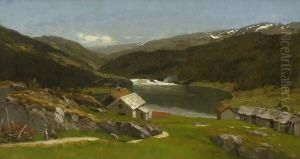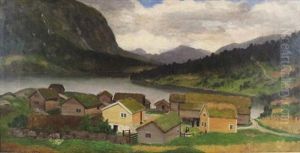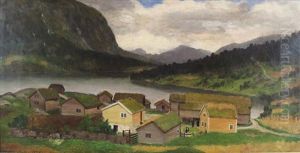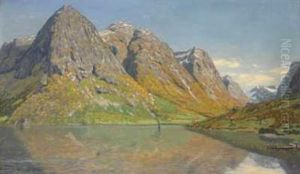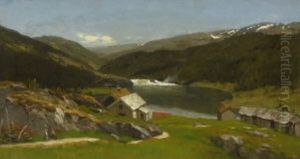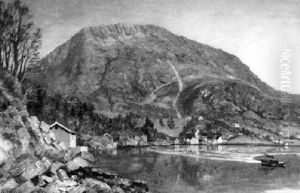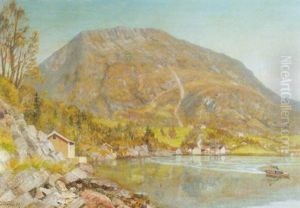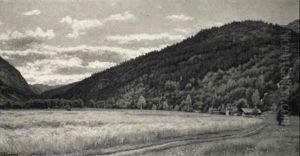Anders Guttormsen Wigdahl Paintings
Anders Guttormsen Wigdahl was a Norwegian-American artist known for his work in glass painting and church decoration. Born on June 3, 1869, in Norway, Wigdahl emigrated to the United States where he would become a significant figure in the art scene of his time, particularly in the Midwest.
Wigdahl's early life in Norway provided him with a rich cultural background that he would later embed into his work. He pursued his artistic education at the Royal School of Drawing in Kristiania (now Oslo), which laid the foundation for his future pursuits. After moving to the United States, Wigdahl settled in Minneapolis, Minnesota, where he established himself as an artist and an influential member of the Norwegian-American community.
Throughout his career, Wigdahl specialized in church art, a genre that was deeply influenced by his Scandinavian roots and his Christian faith. He became known for his ecclesiastical interior designs, stained glass windows, and religious frescoes, many of which adorned Lutheran churches across the United States. His work was characterized by its attention to detail, vibrant colors, and the ability to convey spiritual narratives through visual art.
Wigdahl's artistry was also evident in his glass paintings, a technique involving the application of paint to glass surfaces, which were then illuminated by light, creating a luminous effect. His contributions to this medium were notable for their technical skill and artistic beauty. His work in this area helped to popularize glass painting in the United States, particularly in religious contexts.
In addition to his ecclesiastical art, Wigdahl engaged in teaching, passing on his skills and knowledge to a younger generation of artists. His legacy is preserved not only in his surviving works but also in the influence he had on American church art and decoration. Anders Guttormsen Wigdahl's impact on the Norwegian-American community and his unique blend of cultural and artistic traditions have ensured his place in the history of American art.
Wigdahl's life came to an end on November 28, 1947. His art continues to be appreciated for its craftsmanship and its embodiment of the cross-cultural experiences that define the American immigrant narrative. His contributions to church art remain a testament to the fusion of his Norwegian heritage with his adopted American identity.
